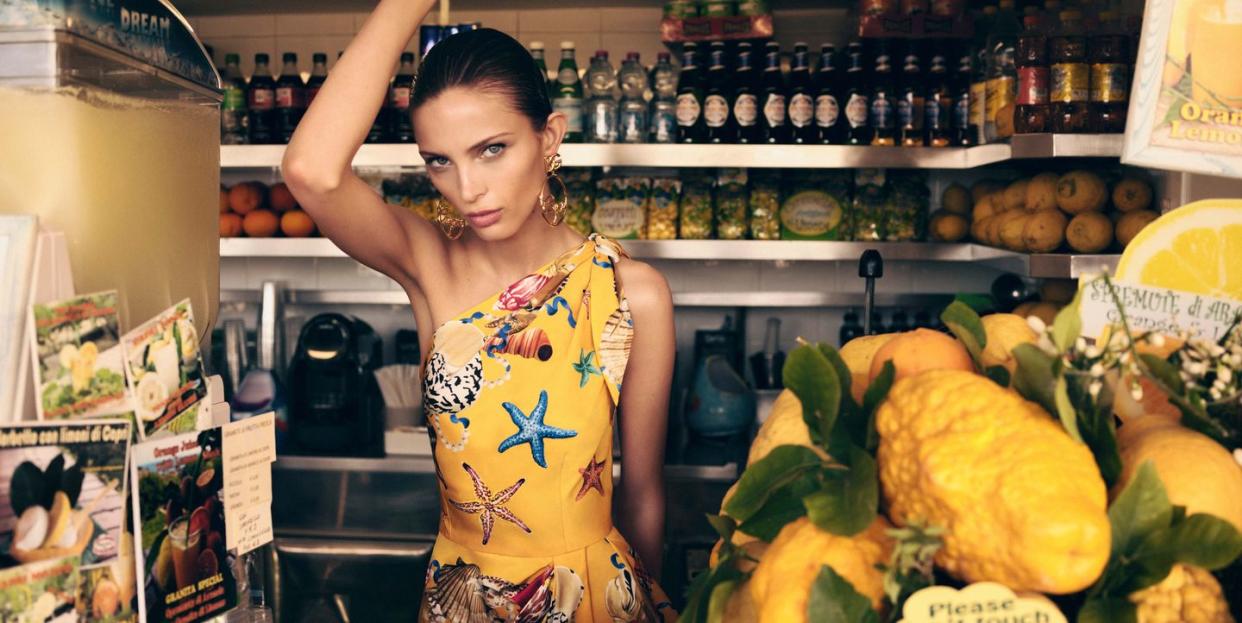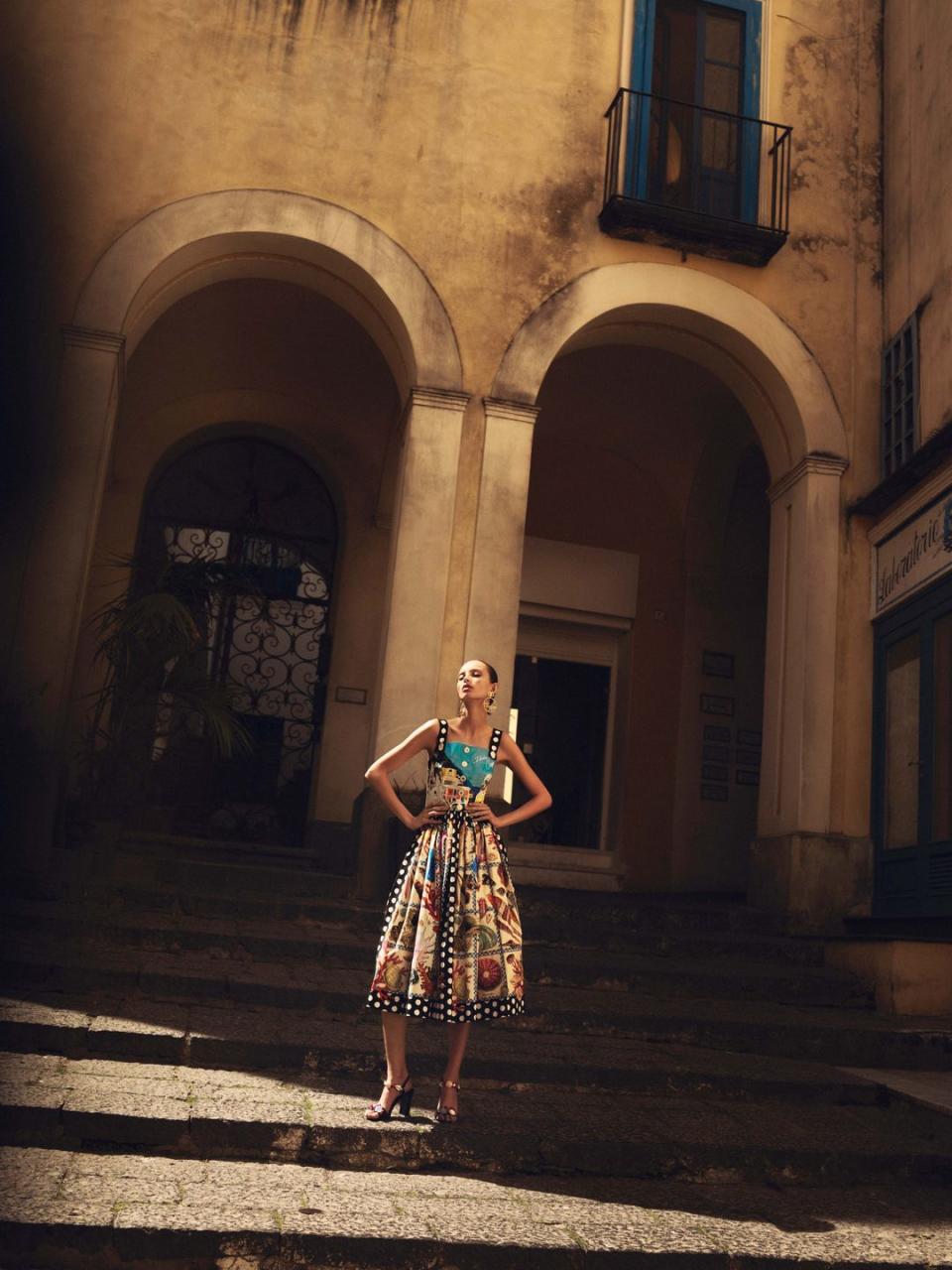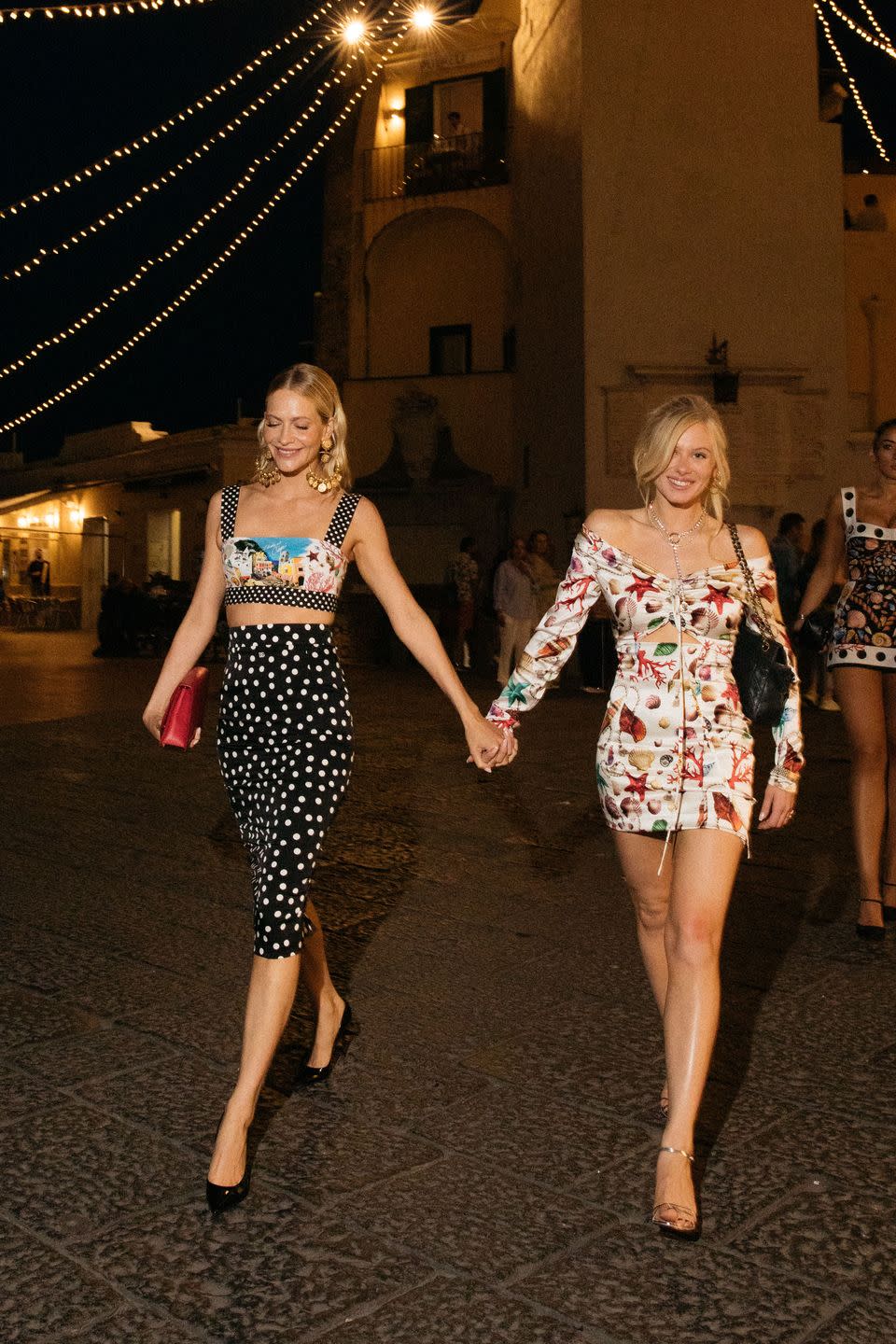What Mytheresa's ongoing partnership with Dolce & Gabbana tells us about the retailer's success

Last month, a group of 80 Mytheresa guests – comprising top clients, content creators, VIP guests and press – flew to the Amalfi Coast for a spectacular dinner on the island of Capri, in celebration of the luxury retailer's exclusive summer capsule with Dolce & Gabbana. There, the group enjoyed an aperitivo at a private bar in the famed piazzetta, before dining under a romantic canopy of lemon trees at the iconic Da Paolino restaurant, followed by a night of traditional Italian music at the historic Anema & Core taverna – all decked out in vibrant, colourful Dolce & Gabbana prints. It was the very definition of la dolce vita in one memorable evening.
While it might sound unique (and that's precisely the point), the event was actually one of many 'money-can't-buy' experiences that the multi-brand retailer has become known for – from partying in Cannes with Gianvito Rossi to touring Lake Orta with Brunello Cuccinelli – a way of fostering relationships with its core customers and brand partners, while also celebrating and publicising the launch of exclusive collaborations. This most recent collection with Dolce & Gabbana, which was inspired by Capri, marks the eighth such partnership between the two.
"In the beginning, it was a small extra little story on top of what we buy from the showroom," Richard Johnson, Mytheresa's chief commercial and sustainability officer, tells me of the annual collaboration. "I would say now, at this point – and we invest heavily in this from an event point of view, but also from a product point of view – it is more of a standalone collection in its own right. It’s quite a scale." Indeed, the collection spans everything from sundresses, scarves and silk trousers to clip-on earrings, bucket bags and raffia sandals, all designed to inject your wardrobe with some of that quintessential Italian glamour.
"What we what we love about working with Dolce & Gabbana in general is that they're so synonymous with Italy and Italian culture – and that's such a such an exportable concept, isn't it? Everyone knows what Italian summer stands for and so we’re exporting a little bit of Italy to the rest of the world,"Johnson continues. "It’s capturing that Italian lifestyle, that love of the summer, and people want a little taste of that, especially in times like these, which are frankly, very, very tough on a lot of people. Some escapism is definitely much needed."

While it's unlikely that Mytheresa's top clients have been hugely impacted by the cost-of-living crisis, there's no denying that it's a challenging landscape for both independent labels and multi-brand retailers right now, with the recent closure of MatchesFashion just one example. The Munich-based Mytheresa is undeniably faring better than most of its competitors, something Johnson attributes to the platform's unflinchingly tight curation.
"It’s very much a conscious decision; it’s central to our strategy," he says of the concise offering (the site stocks around 250 brands in comparison to Farfetch's 3,000-plus roster). "Because it's what our customers tell us they want. They want us to do the heavy lifting. We've been arguing for years that less is more and we stand by that. If you come to Capri or anywhere else this summer and you want a dress or swimwear, whatever it is, actually you don't want to see every possible thing. Our customers don't have time for that – even if they love shopping. So less is more – and that’s easy to say, but it's actually quite hard work, because yes you can add [new brands], but then you have to constantly trim and be very disciplined in making decisions about who you can work with." Without that disciplined trimming, you risk "straying into middle ground," he adds, "which is a difficult place to be".
While this curation is clearly appealing to the customer, the added benefit of having fewer brand partners is that the retailer can build stronger relationships with each one. "That's the other important element, which sometimes gets missed," says Johnson. "If you carry hundreds and hundreds of brands, the best you can hope to do for the majority of them is upload the product and let it happen. With fewer brands, fewer partners, we can actually go deeper. We can spend more time with them, we can develop events like this [in Capri]. This could never have happened if we carried many more designers and spread our efforts too thin. This relationship [with Dolce & Gabbana] has built over those eight capsules because we've continued to develop it and continued to invest in it."
This strict approach to buying has allowed Mytheresa to remain focused, without getting distracted by passing fads or one-season wonders. Instead, the team looks for brands with longevity. "We're not always the first to jump on a new designer or jump on a collection in its first season," says Johnson. "There have been credible retailers that have done that and had great reputations for it, but what we tend to look for is a designer's ability to develop their idea over time. So sometimes we're a little more comfortable coming in after a few seasons, when we can see how it's developing. When we start working with someone new, we want to think that we will continue to work with them for a very long period of time – or indefinitely. You can't always tell that from season one. Once you get a sense of what they're about, how the story is unfolding, whether there’s a serious business behind it, then we have a bit more confidence to think about long-term partnerships."
Key to this, he says, is investing in brands that have a strong, distinctive identity. "As a designer, you have to stand for something. You have to have a very specific point of view. Unfortunately, a lot of fashion has become about recognising designers simply because it's branded – and in some cases, that's fine and has its place. But actually, I think if you can recognise the designer by the aesthetic, without having to literally spell it out, that's real credibility."

Building relationships and customer loyalty also requires designers that are able to develop their collections over time, without compromising what they stand for. "That [aesthetic] has to be translatable," says Johnson. "Too many designers have become very famous for a signature item, whatever that might be, but haven't been able to translate that into a bigger concept.
"It’s super important that we innovate and incrementally update a story over time. You absolutely cannot just have the same dress in a new print. It has to evolve and continue to engage people's interests and inspire them. Otherwise it becomes superfluous."
But curation is just one secret to the retailer's success. The other vital ingredient, according to Johnson, is putting the customer first – really understanding who the audience is, remaining focused on them, and offering unparalleled service. "We really think about what it is that our customers want from us, not what necessarily we want to give to customers," he explains. "The customer is always the starting point. Our Net Promoter Scores (NPS) are a foundation of what we do. Everyone from Michael, our president, through to the whole team, read the comments that come back from customers so we really understand their perspective. We don't presume to understand them. We really have focused very hard on that and made sure that everything we do serves the customer better."

This also means concentrating more on the core clients, as opposed to chasing the more fleeting, aspirational shoppers. "For example, to get a bit more specific on the buying and merchandising side, we don't only look at the usual measures of revenue growth, we look at who we are selling it to. Is it our audience? Or are we doing something here that takes us to a slightly different audience? Where we see brands that maybe don't resonate with our core audience, with those high-value luxury customers, that’s where we might move away from. It could be great businesses – it’s just not our business. There aren’t lot of retailers that necessarily think along those lines."
Approximately 3 per cent of Mytheresa's customer base accounts for around 40 per cent of its revenue, and those are the clients that might be invited to celebrate with Dolce & Gabbana in Capri. Offering these 'money-can't-buy' experiences allows them to treat their most loyal customers as if they are part of a private members' club, building a community – not only with themselves and the respective brands, but with each other.
"In many ways we adopt a fast and slow approach," says Johnson. "When customers are shopping with us online, they need it to be fast at every stage – from the finer detail of page-loading speed, but also, of course, how quickly they can get the product they want, how easily they can check out; the whole thing needs to needs to be fluid and fast. But then what we've seen here in Capri is the other end of the spectrum: the slow. It's where people have actually given up their own precious time – maybe 48, 72 hours of their time – to come and spend it with us. So it’s fast and it’s slow; nothing in the middle. It’s real efficiency on the digital experience combined with the slower process of making real, lasting relationships. That’s where the magic happens."
Shop the full Dolce & Gabbana Capri collection at Mytheresa here.
You Might Also Like


